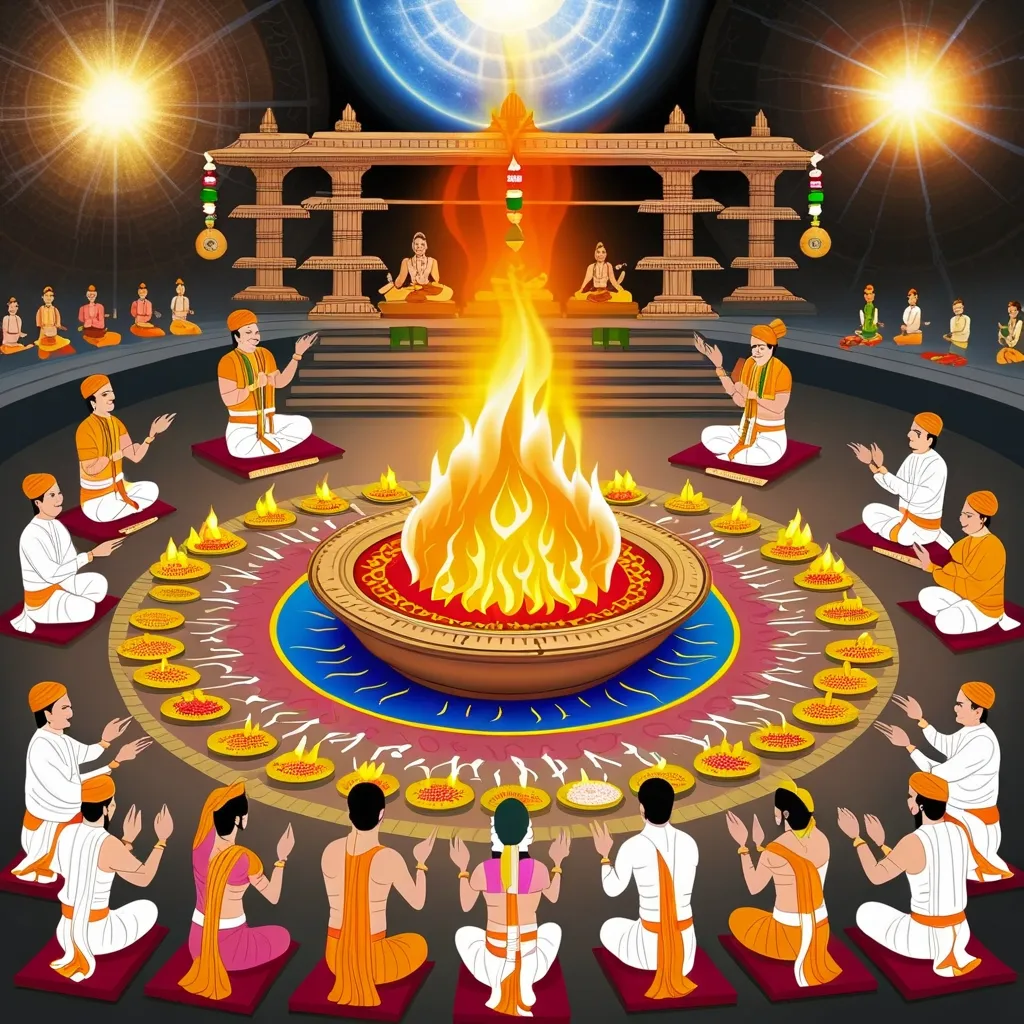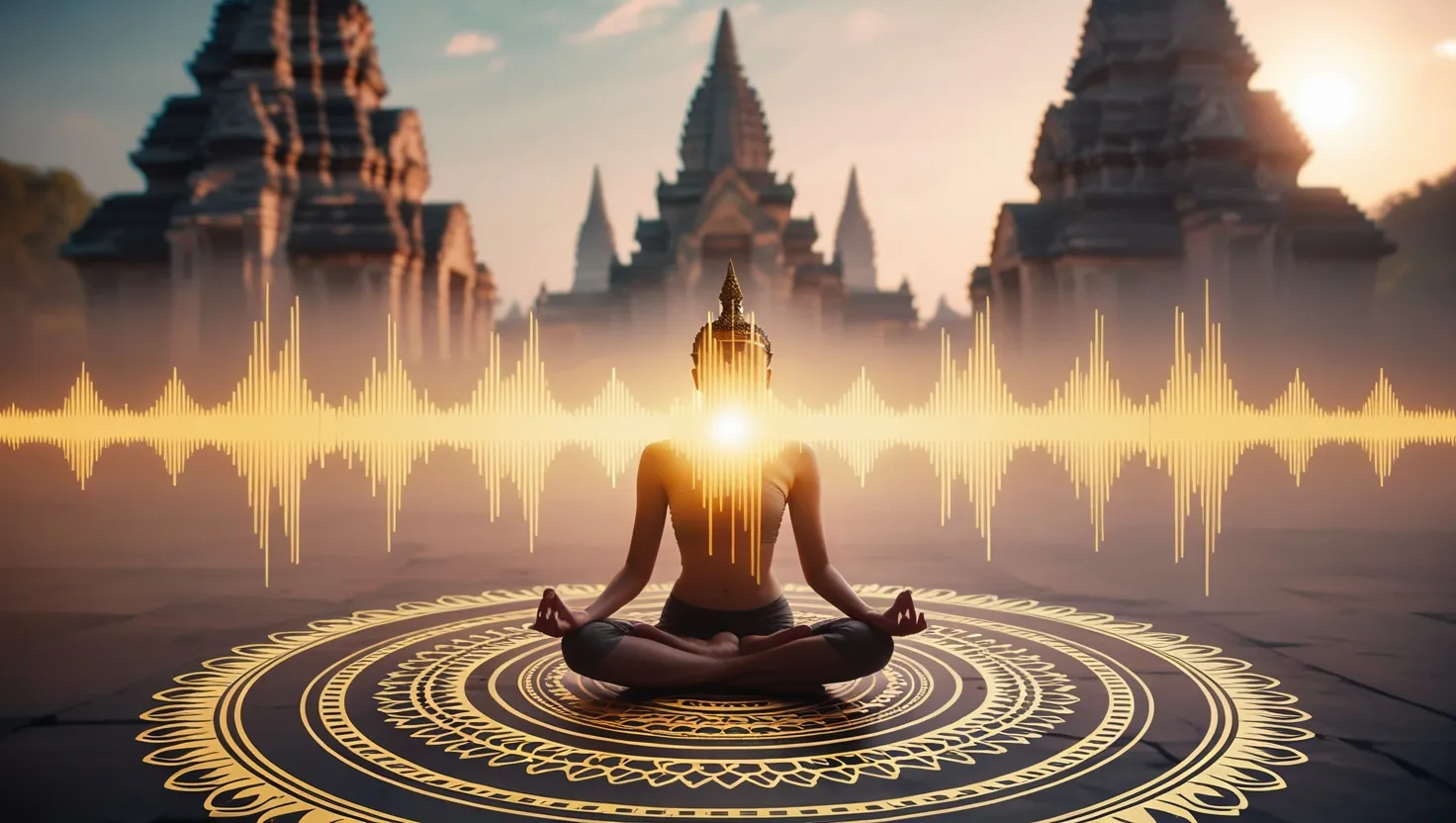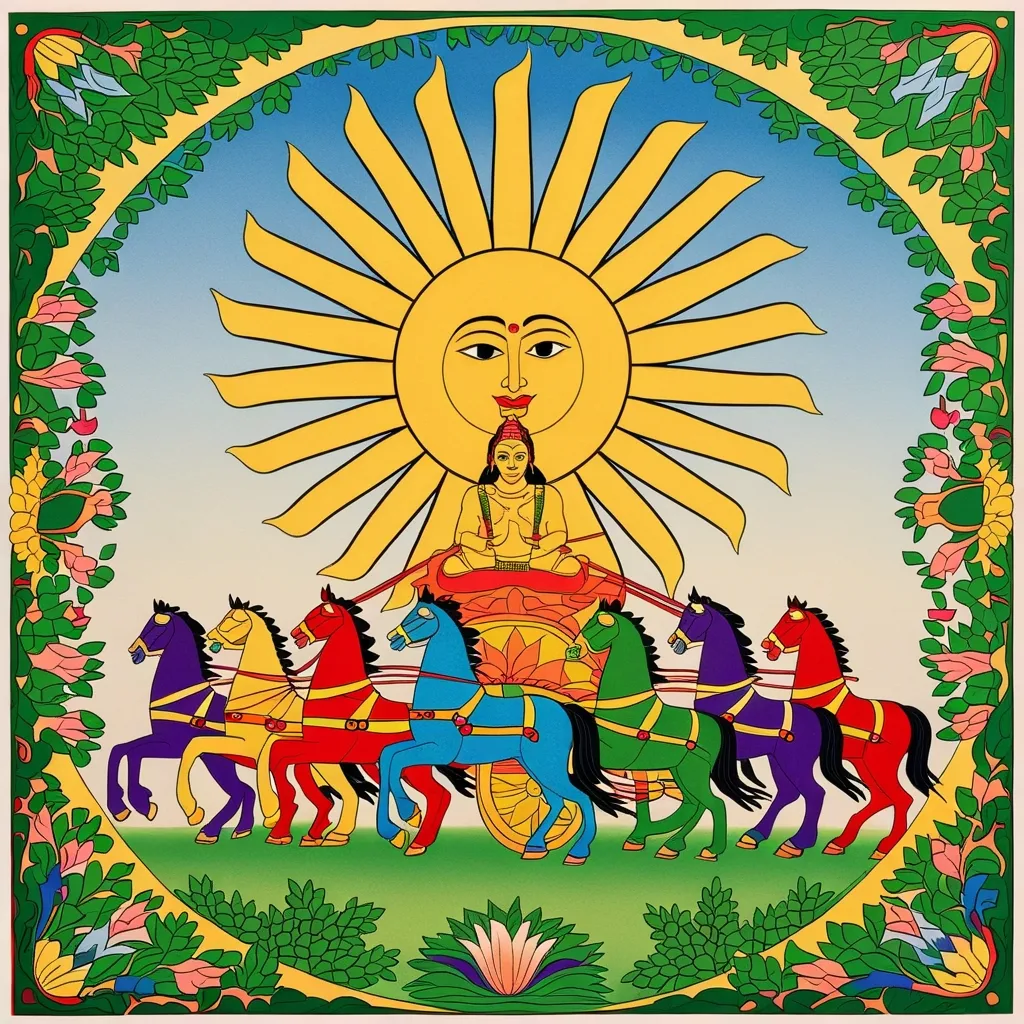In the rich and colorful landscape of Hinduism, Yajnas, or sacred fire rituals, hold a special place, especially within the context of the Yajur Veda. Let’s dive into the heart of this ancient practice that’s more than just a ritual; it’s an entire spiritual experience and a doorway to understanding cosmic mysteries.
At the very core of every Yajna lies the sacred fire, known as Agni. Think of Agni as the ultimate cosmic messenger. The first word in the Rig Veda is “Agni,” which tells you just how crucial this element is. During a Yajna, Agni acts as the go-between for humans and the divine, carrying our offerings up to the gods and bringing back those divine blessings.
But Yajnas are so much more than just a ritual—it’s about hitting unity and devotion on multiple levels. You’re not just offering ghee or other materials into the fire; you’re chanting ancient Vedic mantras and following specific actions that create a powerful sense of unity and devotion. This unity is threefold: devotion to the divine, fostering togetherness among those participating, and practicing charity through giving.
Now, there are all sorts of Yajnas, each with its own unique purpose. You’ve got everyday rituals, mythological ones, and others like Dravya Yajna (offering material goods), Yoga Yajna (using your actions), Tapo Yajna (practicing austerities), and Jnana Yajna (sharing knowledge). This diversity shows just how versatile and deep this ancient practice is.
Beyond their spiritual essence, Yajnas are believed to positively impact the environment. The sacred fire purifies the air, and the rituals bring nature into balance. Spiritually, Yajnas help you achieve self-realization and build control over your inner self. They’re seen as essential steps toward Moksha, or salvation, and often tie into the Gayatri Mantra, another powerful spiritual tool.
Priests usually lead these Yajnas, each with specific roles and responsibilities. The steps in these rituals can be quite intricate. Preparing the altar, called the Vedi, chanting mantras, and performing actions in a ceremonial and often dramatic manner adds layers of depth to the experience.
And guess what? Yajnas have cosmic significance too. They aren’t just local events but are seen as acts of creation and regeneration. Take the Agnistoma Somayaga, for example. This complex ceremony connects humans and the divine and is traditionally performed in spring. It’s like a model for all Soma sacrifices extending effects across earth, atmosphere, and heaven.
On a personal level, Yajnas can be transformative. They aid in spiritual growth, promoting a sense of detachment and reminding us of our divine nature. Socially, they bring people together, fostering unity and harmony within the community.
Historically and culturally, Yajnas have been around since Vedic times. Initially, they were performed to appease natural forces but later evolved to hold broader spiritual significance. Back then, the Vedic people largely depended on nature, personifying natural phenomena into gods they worshiped through these rituals.
And don’t think for a second that Yajnas are outdated. They’re still very relevant today. You’ll find them in various forms, from simple ceremonies at home to grand community events. The principles of Yajna—giving, receiving, and unity—are timeless and universal, offering a path to spiritual growth in our modern world.
The essence of Yajna is about connecting with the divine and finding your place in the universe. It transcends mere worship and becomes a way of life that emphasizes selflessness, unity, and devotion. Whether you’re part of a grand ceremony or a simple home ritual, the essence remains the same: to unite the individual with the infinite and find peace and harmony in the process.
In summary, Yajnas are gateways to understanding profound cosmic and spiritual dimensions. They unite us with the infinite, foster unity and devotion, and offer paths to self-realization and spiritual growth. Dive into the significance of Yajnas and discover a rich tapestry of spiritual, environmental, and social benefits that continue to inspire today.






